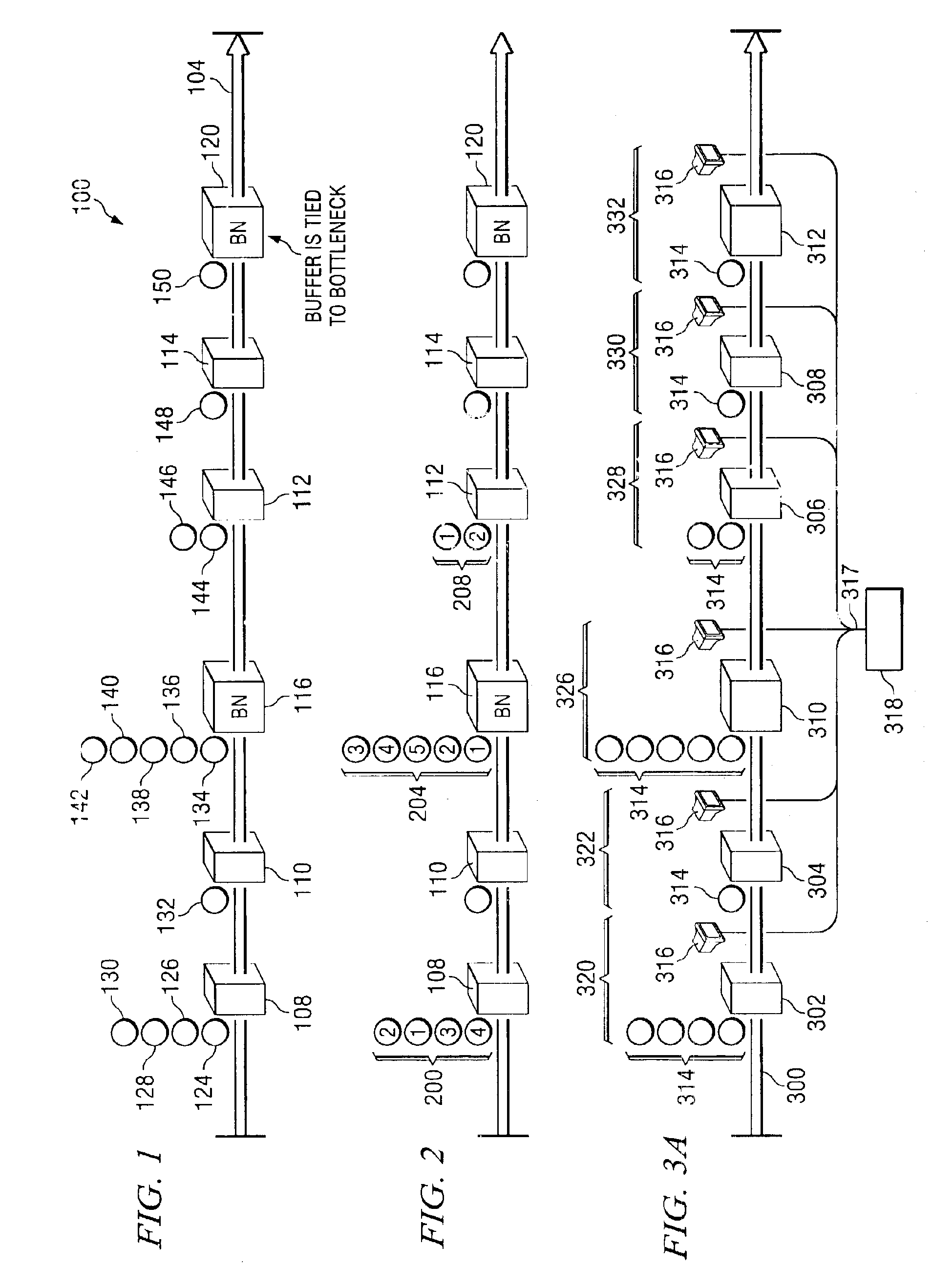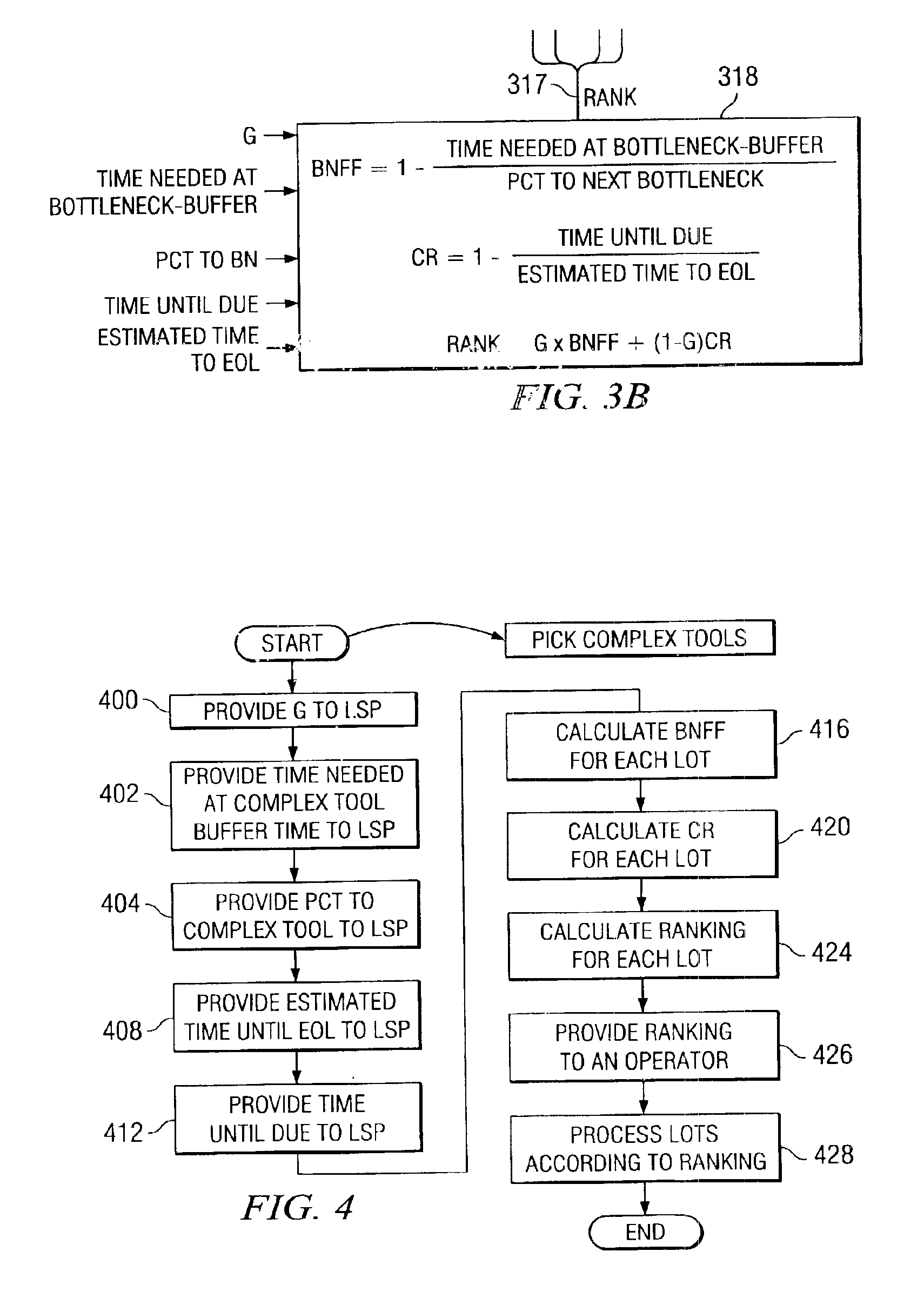Method and apparatus for bottleneck feed factor based scheduling
a feed factor and bottleneck technology, applied in the field of manufacturing processes, can solve the problems of optimizing local wip movement, system scheduling lots that do not account for the current line dynamics in the manufacturing line, and rules that do not take into account the continuously changing dynamics of the manufacturing line, so as to maximize bottleneck throughput, promote manufacturing line linearity, and minimize bottleneck idle time. the effect of the idle tim
- Summary
- Abstract
- Description
- Claims
- Application Information
AI Technical Summary
Benefits of technology
Problems solved by technology
Method used
Image
Examples
Embodiment Construction
With reference now to the figures and in particular with reference to FIG. 1, therein is depicted system 100 for scheduling lots of items to be manufactured in accordance with one embodiment of the present invention. A manufacturing line 104 moving from left to right is shown. Tools and machines used in the manufacturing process are represented by small rectangular boxes 108, 110, 112 and 114. Tools and machines which are known for bottlenecks and are therefore referred to as “bottlenecks” are represented by larger boxes 116 and 120. The plurality of lots being manufactured are represented by circles 124-150.
Each lot 124-150 on the manufacturing line 104 has certain properties associated with it. One property is the planned cycle time (“PCT”). The PCT is the amount of time for a particular lot 124-150 to move through the next tool, the PCT includes the time required to machine the lot at the next tool, the processing time, the time to transport the lot, and any waiting time. The “PC...
PUM
 Login to View More
Login to View More Abstract
Description
Claims
Application Information
 Login to View More
Login to View More - R&D
- Intellectual Property
- Life Sciences
- Materials
- Tech Scout
- Unparalleled Data Quality
- Higher Quality Content
- 60% Fewer Hallucinations
Browse by: Latest US Patents, China's latest patents, Technical Efficacy Thesaurus, Application Domain, Technology Topic, Popular Technical Reports.
© 2025 PatSnap. All rights reserved.Legal|Privacy policy|Modern Slavery Act Transparency Statement|Sitemap|About US| Contact US: help@patsnap.com



